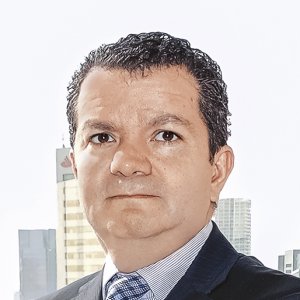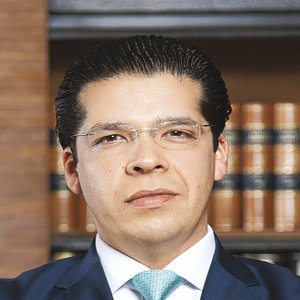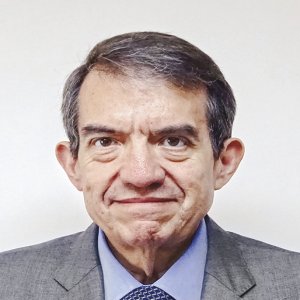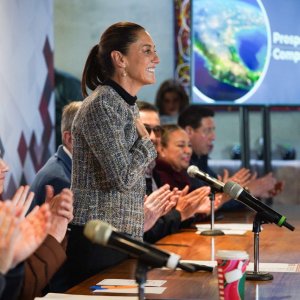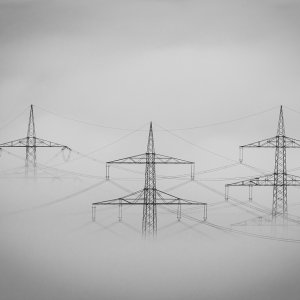Consolidating Mexico's Energy Transition

STORY INLINE POST
Q: What were the Ministry of Energy’s major accomplishments in 2017?
A: 2017 was an important year, marked by several milestones in the wholesale electricity market. We launched the tender documents for the third long-term electricity auction in April. February saw the operation of the first Capacity Market, overseen by CENACE. The first stage of the Universal Electricity Service Fund (FSUE) was initiated on May 30 and more than 20 private players participated in the spot market. A Legacy Contracts Resolution for basic supply was also published on Aug. 25. Planning ahead, we published the third version of PRODESEN and the basis for the ready-to-launch CELs. Restructuring CFE further liberalizing Mexico’s wholesale electricity market, infrastructure planning and the universalization of electricity services helped push the Energy Reform one step forward.
Q: How are subsidies for electricity prices expected to evolve in 2018?
A: The Basic Supply Tariff will be available before the end of 2017. It will be published by CRE, as the regulator now has the Legacy Contracts Resolution it required to finalize the tariff calculations. These contracts are basically between old or new CFE generation plants and CFE Basic Supply, the main ingredient of generation cost. Without the cost of generation, the formula to obtain the Basic Supply Tariff, adding transmission and distribution costs, is incomplete.
This will be the first time in history that CRE publishes a Basic Supply Tariff, as the Ministry of Finance held this responsibility until now. Signaling the cost reference for electricity services to different types of users, established by an independent economic regulator isolated from political processes, is at the core of the Basic Supply Tariff. The number of bilateral long-term energy contracts in the wholesale market will be significantly higher thanks to this new reference.
Q: What new technologies will have the greatest shortterm impact on Mexico’s electricity market?
A: As a requirement embedded in the Energy Transition Law, we published the Program for Smart Electricity Grids in May 2016, and a complementary document in February 2017. We drafted it with a systemic vision that included the integration and time frame for new technologies and renewable electricity generation, mirroring international trends. For instance, we considered the progressive incorporation of energy storage, controllable electricity demand, electric cars, IoT and the expansion of distributed generation. Greater measuring, managing and telecommunications capacities are the major implications for the grid. Specific programs both for independent system operators and distributors, relating to specific projects regarding cost-benefit analysis and other viability-measuring tools for a smart grid, were made available. Schemes for contracts in transmission-line development are also under consultation with the electricity industry to finalize the details of the draft contract model.
Q: What mechanisms are under development to integrate new technologies into the Mexican electricity system?
A: In 2016, we published the Interconnection Manual for Distributed Generation, a landmark that targets administrative procedures and the shortening of time frames for different distributed generation technologies to be connected to the electricity system. It stipulated the design of the electricity market from the architecture outlined in the Electricity Industry Law, integrating specifications according to market rules, and remuneration mechanisms for any product that adds value to the system. Two major elements stand out when it comes to incorporating technological innovations. First, the ability to connect to the grid, as long as it is technically feasible and in some cases under specific regulations. Second, the ability to offer services from energy storage or associated services. Transitioning from a vertically-integrated monopoly to a market system requires the integration of technological innovations into the electric grid. Markets incorporate technological innovations at a much faster pace compared to vertically integrated systems.
Q: What platforms are in place to reinforce interactions between government authorities and private players?
A: Every regulation and instrument published by the Ministry of Energy as early as the constitutional reform of 2013 secondary laws, the electricity market’s legal basis and market practice manuals — have been the object of public consultations, some formally in COFEMER, pertaining to market rules. So far, there have been three editions of PRODESEN resulting from consultations with industry players. Clean Energy Requirements were published as a legal and compulsory requisite of clean energy, also in consultation with industry players. The Program for Smart Electricity Grids went through the same process. The different contract models for the long-term and mediumterm electricity auctions were consulted as well. The new scheme for transmission line contracts is under consultation with industry players to define the most suitable version of the contract model. Every process includes industry opinions and feedback, either through formal schemes in COFEMER or schemes outlined by the law, such as with PRODESEN’s electric system planning. The novelty of 2017 was the creation and installation of the evaluation committees for CENACE and the wholesale electricity market, in which the system operator as well as the variety of market participants are represented, including generators and suppliers, offering constant interaction with regulatory authorities.
Q: How is the Ministry of Energy fostering CENACE’s maturity as the administrator of the national electric system?
A: The Ministry of Energy is part of CENACE’s Board of Directors, overseen by the Minister of Energy. The ministry provides support for different processes, obtaining resources and management. Evaluation of CENACE’s performance is vital. We hired international consulting firm Utilicast in the last quarter of 2016, together with Deloitte, to evaluate the degree of advancement in the implementation of different market components stipulated in the Law and in the Market Basis. They designed an evaluation based on the traffic-light system for each process and presented the report to CENACE’s Board of Directors. CENACE’s evaluation committee also reports to the Ministry of Energy, wherein everything pertaining to progress in the process is taken under consideration.
Q: What is the expected impact of the new financing model for transmission lines?
A: This model recaptures something already outlined in the constitutional reform, where private third parties can develop transmission lines to be operated and maintained on behalf of the government. The Electricity Industry Law stipulates that the Ministry of Energy can conclude contracts with private players. Eight months went into developing a scheme hand in hand with international consultants. A series of best practices were integrated into this process from schemes similar to those in Chile and Brazil. PRODESEN transmission lines can be built through this scheme. In December 2017, we published the first pre-basis tender for a major transmission line project, parallel to the transmission lines tenders to be developed by CFE Transmisión. The CFE tender was originally launched in 4Q16, and received feedback from consortiums interested in developing a transmission line from Tehuantepec to Morelos. This particular tender is expected to be announced by January 2018 by CFE Transmisión. Deferred-Impact Public Spending Project schemes complement transmission line development efforts under the responsibility of CFE.
Q: How will the new electricity market give the country a competitive edge?
A: The basic premise of the Energy Reform is to lower costs for energy services. The only way to achieve that in the electricity sector is to attract investment and install cheaper and modern generation plants to replace outdated and expensive facilities. Reducing costs in a durable manner in the mid to long term can only be achieved under competition schemes. This is at the core of the design of the competitive long-term electricity auctions, the short-term electric market, the building of a competitive power market and the development of schemes for competitive transmission lines. Each and every measure attracts investment. The first two auctions totaled US$6.6 billion and the third auction brought in an additional US$3 billion. The midterm electricity auction was similarly designed. The Tehuantepec-Morelos and Sonora-Baja California transmission lines are estimated to attract between US$1-2 billion each. We consider both to be the most important new infrastructure projects for 2018 by far.
Q: What are the major arguments for industries that are not related to the electricity market to support Mexico’s energy transition?
A: The most convincing argument for any Mexican industry to bet on clean energy is that it is more cost-competitive than fossil fuels. Electricity generation prices achieved in the first two auctions were lower than combined-cycle generation, which is the greatest lesson the transition process showcased. We hope to repeat this with the coming auctions. While different variables such as purchasing power, capacity and intermittency evoke skepticism when compared to fossil fuels, more companies are switching to renewables. Two years ago it would have been much harder to make a case for clean energy. The competitiveness of new clean energy sources has changed the game of power supply, in addition to the positive impact on the environment.

